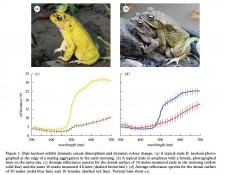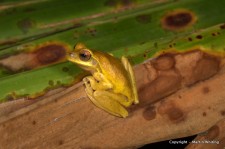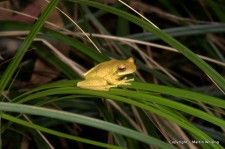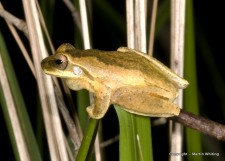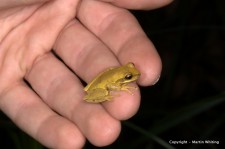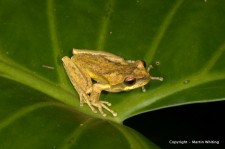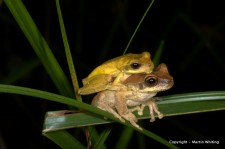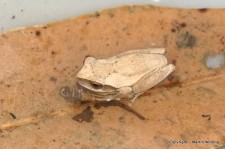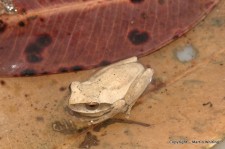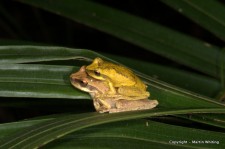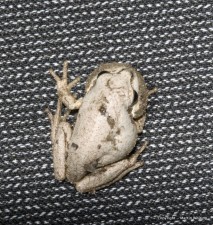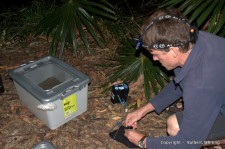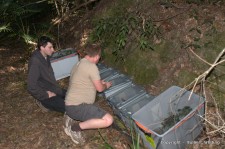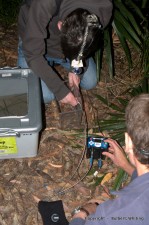Dynamic (physiological) colour change in the context of sexual selection is almost unstudied in frogs. The whirring tree frog (Litoria revelata) is one of several Australian frogs which use colour during sexual advertisement. Grant Webster’s honours project is to test whether colour is indicative of male quality. To this end, he is measuring the colour of amplectant males (in Wallingat NP, NSW) before briefly moving the pair to a container where the female can lay her eggs. By quantifying hatching success and then the proportion of tadpoles that successfully metamorphose, we will have a measure of reproductive fitness. He is also testing for a correlation between their call and aspects of colour to establish whether the call signals different information or reinforces the same signal. Interestingly, males do not turn back to their basal colour after pairing up with the female, which is what we would predict if colour signals are conspicuous and costly. This is the case for the Costa Rican toad Bufo luetkenii (see Biol. Lett. (2010) 6, 63–66).
- Figure 1 from Doucet, S.M., and D.J. Mennill. 2010. Dynamic sexual dichromatism in an explosively breeding Neotropical toad. Biol. Lett. 6, 63–66. doi:10.1098/rsbl.2009.0604
- Litoria revelata habitat at Smiths Lake.
- Male Litoria revelata in display colour.
- A different male Litoria revelata in display colour.
- A brown male with much less yellow.
- Males are small, and smaller than females.
- Male Litoria revelata in display colour.
- Amplectant pair in which male display colour persists.
- Male Litoria revelata in baseline colour.
- Male Litoria revelata in baseline colour.
- Amplectant pair.
- A male with a particularly nasty parasite that caused a persistently extended vocal sac.
- Martin using our Jaz optic spec.
- Grant Webster and Matt Bulbert with spawning frogs.
- Grant Webster spec’ing a frog.
- More spec’ing.
These photos by Martin Whiting. For other, excellent photos of Litoria revelata by Grant Webster, go here.

